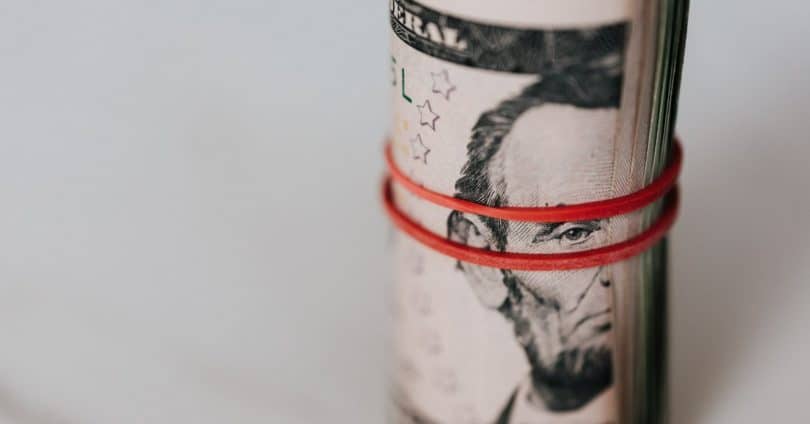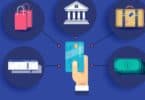A checking account is a deposit account that facilitates withdrawals and deposits at a financial institution. Checking accounts, also known as demand accounts or transnational accounts, are highly liquid accounts that can be accessed via cheques, automated teller machines, and electronic debits, among other methods. A checking account differs from other types of bank accounts in that it often allows for unrestricted withdrawals and deposits, although savings accounts may have restrictions on both.
Using Checking Accounts
Consumers can open checking accounts in bank branches or online through the website of a financial institution. Account-holders have the option of using automated teller machines (ATMs), direct deposits, or over-the-counter deposits to deposit monies. They can write checks, use ATMs, or use electronic debit or credit cards linked to their accounts to access their funds.
Electronic banking advancements have made checking accounts more convenient to use. Customers can now pay their bills electronically, eliminating the need to write and mail paper checks. They can also utilize smartphone apps to make deposits and transfers, as well as set up automatic payments for recurring monthly costs. Don’t forget about checking account costs—some things, such as contingent fees like overdrafts, aren’t generally advertised to consumers who don’t read the fine print.
Do you what current account is? Read here to know about current account.
Checking Accounts and Overdrafts
Your bank may reimburse the difference if you write a check or make a purchase for more than you have in your checking account.
Many banks fail to inform clients that they would charge you for every transaction that causes your account to go into overdraft. If you have a $50 account balance and make purchases of $25, $25, and $53 with your debit card, you will be charged an overdraft fee for the purchase that overdrew your account, as well as for each subsequent purchase after you’ve gone into the red.
There’s more, though. You wouldn’t just be charged a fee for the last purchase in the scenario above, where you made three purchases of $25, $25, and $53. Many banks contain provisions in their account-holder agreements that, in the case of an overdraft, transactions will be grouped in order of their size, regardless of the order in which they occurred. This means that the bank would combine those transactions in the following order: $53, $25, $25, and charge a fee for each of the three transactions on the day you overdrew your account. Your bank may additionally charge you daily interest on the loan if your account remains overdrawn.
Larger payments must be cleared before smaller payments for practical reasons. Many major bills and debt payments, such as automobile and mortgage payments, are generally made in substantial amounts. It is best to have such payments processed first, according to the logic. However, such fees can be a very lucrative source of revenue for banks.
Checking Account Service Charges and Rates
Service charges were created as a way to generate income from accounts that weren’t generating enough interest revenue to cover the bank’s expenses. While banks are traditionally thought of as earning money from the interest they charge customers to borrow money, service charges were created as a way to generate income from accounts that weren’t generating enough interest revenue to cover the bank’s expenses.
In today’s computer-driven world, maintaining an account with a $10 balance costs a bank about the same as maintaining an account with a $2,000 balance.
The distinction is that, although the larger account earns enough interest to provide some revenue for the bank, the $10 account costs the bank more than it earns. Customers that fail to maintain a minimum balance, issue too many checks, or, as previously mentioned, overdraw an account are charged penalties by the bank to make up for the shortfall.
Hey!!! Click here to read about Certificate of Deposit CD
Checking Account Features
1.Make a direct deposit
Direct deposit allows your employer to transfer your paycheck into your bank account online, making the funds available to you right away. This characteristic also benefits banks, as it provides a consistent stream of income for them to lend to customers. As a result, if you set up direct deposit for your account, many banks will provide free checking (i.e., no minimum balance or monthly maintenance costs).
2.Transfer of Funds over the Internet
You can have money directly put into your account without having to wait for a check to arrive in the mail using an electronic funds transfer (EFT), often known as a wire transfer. EFTs are no longer charged by most banks.
3.ATMs
ATMs make it easy to get cash from your checking or savings account after hours, but be aware of any fees that may be linked with their use. When you use an ATM from your bank, you’re usually safe, but using an ATM from another bank could result in surcharges from both the ATM’s owner and your bank. Surcharge-free ATMs, on the other hand, are becoming more common.
4.Banking without cash
For anyone with a bank account, the debit card has become indispensable. It has the portability and simplicity of use of a major credit card without the high-interest credit card costs. Many banks provide zero-liability fraud protection for debit cards to help prevent identity theft if the card is lost or stolen.
Different types of checking accounts are available
These are some of the most common checking bank account types offered by banks and credit unions.
- Student checking account
- Private bank checking account
- Second-chance checking account
- Senior checking account
- Interest-bearing account
- Interest-bearing account
- Business checking account
- Traditional checking account
- Premium checking account
- Checkless checking account
- Rewards checking account
How to Open a Checking Account
Some companies keep track of your banking history and report it to you. “Consumer banking report” is the official name for this report card on your bank accounts. Before allowing you to open a new account, banks and credit unions look at this report.
ChexSystems and Early Warning System are the two consumer reporting companies that track the vast majority of bank accounts in the United States.
These agencies record whether you have ever bounced checks, refused to pay late penalties or had accounts closed due to mismanagement when you apply for a new account.
Bouncing checks regularly, failing to pay overdraft fees, committing fraud, or having an account “closed for cause” can all lead to a bank or credit union refusing to open a new account for you? If your checking account was terminated due to mismanagement, the information might appear on your consumer banking report for up to seven years under the Fair Credit Reporting Act (FCRA).
Most banks, according to the American Bankers Association, will not report you if you overdraw your account and pay it off within a reasonable amount of time.
It’s good if there’s nothing to report. That is, in fact, the finest conceivable conclusion. It indicates that you’ve been a model account holder.
Read more on the various types of Bank Accounts.
FREQUENTLY ASKED QUESTIONS
What is Checking Account Used for?
A checking account is intended to be utilized for day-to-day monetary requirements. It is an individual’s primary source of funds from which cash can be taken for spending or payments. A savings account is intended to save rather than spend money. Savings accounts, unlike checking accounts, offer the opportunity to earn interest on money placed in the account. Most savings accounts have monthly withdrawal limits, whereas a checking account allows for unlimited withdrawals.
Is a Checking Account a Debit Card?
A debit card is not the same thing as a checking account. A checking account is a deposit account that allows cash withdrawals and deposits at a financial institution. Checking accounts are a person’s principal source of finances for day-to-day transactions, allowing them to withdraw or deposit cash and make numerous payments. Most checking accounts now come with a linked debit card. After that, the debit card can be used to make electronic payments or withdraw cash from an ATM.
What Is the Difference between Checking and Savings Accounts?
Regular (basic) checking accounts, premium checking accounts, student checking accounts, senior checking accounts, interest-bearing accounts, business checking accounts, and rewards checking accounts are some of the numerous types of checking accounts. Each of them has varied features or limits on specific aspects, such as minimum deposit amounts, transaction fees, ATM fees, and overdraft protection, to name a few.
CONCLUSION
Whatever your circumstances, there’s likely a checking account that meets your requirements. Determine which characteristics are most important to you when selecting a checking account. Fees (and how to minimize them) are a high issue for some people. Other factors to consider are the number of branches and ATMs available, as well as if a minimum amount is necessary.









